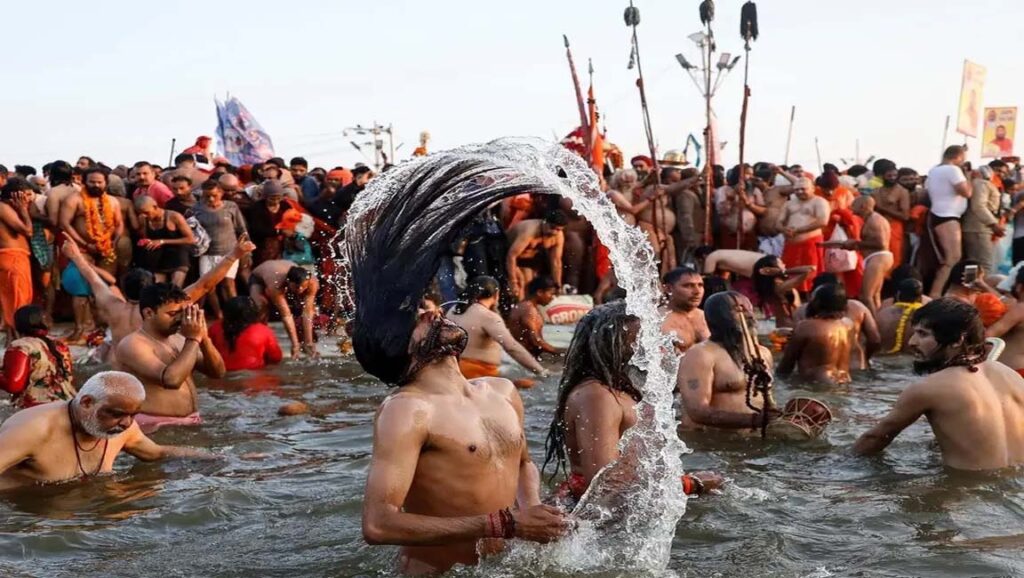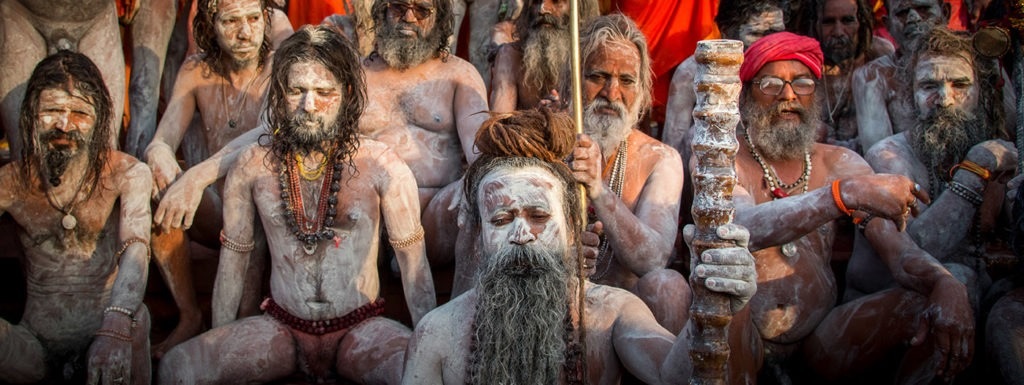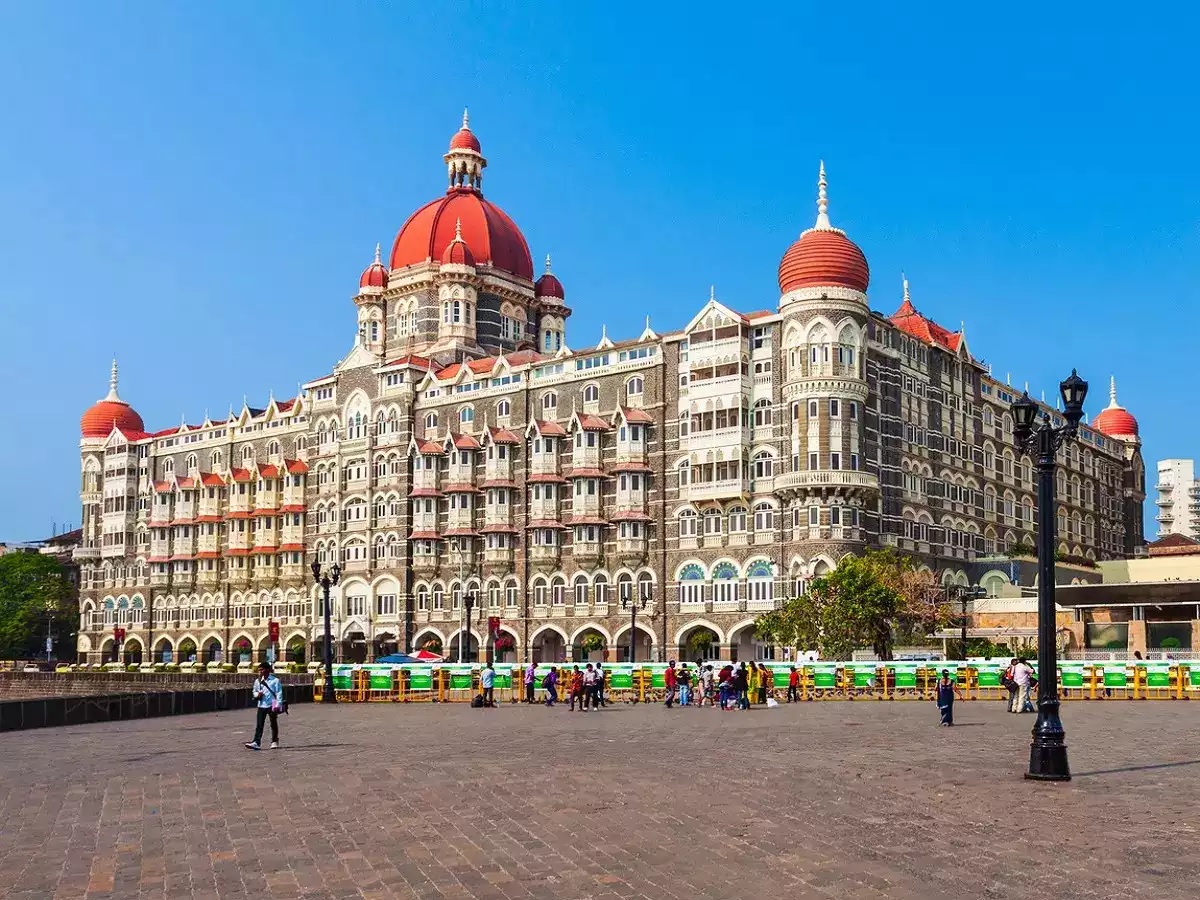Delighted Journey is a leading Prayagraj Kumbh Mela specialist in India, where we have been systematically organizing trips since 2005, with a few tailor-made trips before that. I assure you that it is not bragging to say and write it. All our Kumbh Mela trips are accompanied by Shankar our destination expert. With Shankar, we have therefore accumulated, over the years, great knowledge and know-how to take advantage of this major and exciting event. Which is not always easy because the Indian authorities tend to tighten controls and restrictions over the years, sometimes forcing us to take long walks, but also to “wait” for a while before being able to witness the most important moments. strong, like the arrival of the naga sadhus who go to bathe in the Ganges, their naked bodies covered in ashes. You have to be in the right place at the right time.

The next Kumbh Mela is therefore the Maha Kumbh Mela at Prayagraj (Allahabad), which will take place between January 13 and early March 2025.
We had set up several different trips, with a single departure date, which follow one another chronologically, focused on the Maha Kumbh Mela, but also with the discovery of other regions – notably along the Ganges and meeting the Rana Tharu of the far west of the Nepalese Terai, as well as in combination with other festivals such as Theyyam, Holi, Hola Mohalla, Bodhgaya Tsechu, the Aoeling festival of the Naga Konyak, the Thaipusam of the Tamils.
What is the Kumbh Mela in India? Everything you need to know about one of the largest religious gatherings in the world, taking place in India.
The Kumbh Mela, literally “the festival of the pitcher, Matka in Hindi”, is one of the most sacred pilgrimages in Hinduism, which attracts tens of millions of people every year. This Indian festival, which spans several months, is distinguished by its colorful processions and prayers, bringing together devotees who come from all over the world to bathe in sacred rivers to wash away their sins and free themselves from “the vicious earth cycle of life and death.
These Hindu devotees take part in the Kumbh Mela pilgrimage, which lasts until the end of April in Haridwar every year. According to a well-established ritual, they advance into the waters, bow and immerse themselves in the Ganges, this majestic river which winds through northern India.
The cities which host the Kumbha mela become at the start of this religious event the scene of solemn parades which announce the official arrival of the religious, mounted on a wide range of modes of transport, elephants, horses, camels, cars, palanquins, and chariots , sometimes hauled by men showing piety.
The festival takes place approximately every three years in turn on the banks of the rivers in one of these four holy places, during a cycle of 12 years, however the dates vary according to the Hindu calendar and the position of the planets Jupiter, Sun and Moon.

These four sites where this pilgrimage takes place are:
- Prayagraj (at the confluence of the Yamuna, the Ganges and the mythical Sarasvati), in the month of Magha (January-February).
- Haridwar (along the Ganges), in the month of Chaitra (March-April)
- Nashik (along the Godavari), in the month of Bhadra (August-September)
- And Ujjain (along the Shipra), in the month of Vaishakha (April-May)
In 2019, 240 million people visited Allahabad during ‘Ardh Kumbh’ the 49 days of the Kumbh Mela, making it one of the largest religious gatherings in the world. These visitors come from all over India as well as from abroad. In 2019, the Kumbh Mela welcomed around 1.03 million foreign tourists.
Usually the pilgrimage lasts about four months, starting in January. It revolves around certain dates considered particularly auspicious for the Shahi Snan, or main bathing ritual and defined by astrological calculations.

Kumbh Mela Dates in 2025
Next year, the Allahabad Kumbh Mela will be held from January 14, 2025 (Paush Purnima day) to February 26, 2025 (Maha Shivratri day) at Triveni Sangam in Prayag.

History and origin of the Kumbh Mela
The word “kumbh” is derived from “Kumbha” or “pot” in Sanskrit, while Mela means “fair” or “festival”, making it literally the festival of the pot.
According to Hindu legend, the festival takes its name from the pitcher (pot) of amrita, or nectar of immortality, produced by the devas (gods) and asuras (demons) together.
Indeed, during a battle of twelve days and twelve nights which opposed the gods and the demons to recover the pitcher containing the elixir of immortality, four drops of the precious nectar fell from the jar to compose four sacred places of the Hinduism. And this is where the faithful gather today to cleanse themselves of their sins and pay homage to the gods.

What happens during the Kumbh Mela?
The most crucial stage of the Kumbha mela is the ritual of bathing in the river when its waters transform into amrita. Hindus believe that total immersion in the sacred waters at this time will cleanse them and their ancestors of all their sins. The most favorable periods, fixed by zodiacal calculations, are the days known as shahi shan.
On these days, led by sadhus or holy men, devotees witness full-day rituals that take place on the banks of the rivers. Devotional prayers, called aartis, are recited to the accompaniment of drumbeats.
The religious bath takes place every day, but the ideal time is the night of the full moon. Devotees believe that bathing in the river on this day helps a person achieve “moksha” or salvation.

Types of Kumbh Mela
Five types of Kumbh Mela are organized in India:
- Maha Kumbh Mela: – The Maha Kumbh Mela is held only in Prayag (Allahabad) every 144 years or after 12 Purna Kumbh Mela. This is a unique event that a person can only see once in their own lifetime.
- Purna Kumbh Mela: – Purna Kumbh Mela is held every 12 years at four ritual places in India: Prayagraj (Allahabad), Haridwar, Nasik and Ujjain.
- Ardh Kumbh Mela: – Ardh Kumbh means half Kumbh, i.e. half of the duration of 12 years. It is held every 6 years in two places only: Haridwar and Prayagraj (Allahabad).
- Kumbh Mela: – Kumbh Mela is held in four different places – Ujjain, Prayagraj (Allahabad), Nasik and Haridwar. It is organized by state governments and millions of people participate in it with great devotion and spiritual fervor.
- Magh (Kumbh) Mela: – The Magh Mela, also called Mini Kumbh, is held once a year in Prayagraj. It is organized during the month of Magh according to the Hindu calendar (January 14 – end of February). The Magh (Kumbh) Mela is also a famous annual pilgrimage event for Hindus. According to Hindu mythology, the Magh Mela is considered the starting point of the universe. It is organized every year at the confluence of the three sacred rivers. This confluence point is known as Triveni Sangam, the Prayagraj in Uttar Pradesh, India.

As per the traditional Hindu calendar followed in North India, this sacred festival is organized every year during the Hindu month of Magh. The Magh Mela is not limited to the month of Magh, in fact, the important dates of the baths are spread over a period of 45 days. It is actually a smaller version of the Kumbh Mela. This is why it is also known as Mini Kumbh Mela.
Every year, the Magh Mela begins on Makar Sankranti in January (first day) which is believed to be an important bathing day according to the Hindu religious calendar. This festival begins with a large number of pilgrims taking a holy bath in the Sangam on auspicious dates.

Suggested Program
For the Maha Kumbh Mela 2025, in Prayagraj, at the confluence between the Yamuna and Ganges rivers, we are planning three departure dates, each allowing participation in two or three large baths and an 8-day immersion within the Maha Kumbh Mela .
As in 2013, we are planning an immersion in a guru’s camp, allowing us to experience the great baths more from the inside, following our guru’s chariot towards the waters of the sacred river.
The trip takes between 15 and 17 days in total, including an arrival via Varanasi, where we spend 2 days, and an end of the trip in Lucknow. This also allows us to avoid transport directly from Prajyagraj, whether train or plane, which will literally be stormed during this period. These 2 days in Varanasi are always very interesting, even for those who know, because at this time of Kumbh Mela there are really many pilgrims.

DAYS 1 TO 16: JANUARY 7 TO 22, 2025
FIRST DEPARTURE MAHA KUMBH MELA: 8-DAY IMMERSION WITH TWO “LARGE BATHS”
Day 1: Arrival in Delhi and night train to Varanasi
Day 2 & 3: Varanasi
Day 4: From Varanasi to Ramnagar, Chunnar, Mirzapur and Allahabad. Installation in the camp.
Day 5: Participate in the Maha Kumbh Mela of Prayagraj (Allahabad is the old name)
Day 6 (January 13): Participate in the Maha Kumbh Mela during the “big bath” of Paush Purnima
Day 7 (January 14): Participate in the Maha Kumbh Mela during the “big bath” of Makar Sankranti
Days 8 to 12: Participate in the Prayagraj Maha Kumbh Mela
Day 13: Prayagraj – Ayodhya
Day 14: Ayodhya visit Ram Janm Bhumi.
Day 15: Flight from Ayodhya to Delhi
Day 16: In time dep. transfer.

DAYS 1 TO 17: JANUARY 23 TO FEBRUARY 8, 2025
SECOND DEPARTURE MAHA KUMBH MELA: 9-DAY IMMERSION WITH THREE “BIG BATHS”
Day 1: Arrival in Delhi and night train to Varanasi
Day 2 & 3: Varanasi.
Day 4: From Varanasi to Ramnagar, Chunnar, Mirzapur and Prayagraj (Allahabad). Installation in the camp.
Day 5: Participate in the Maha Kumbh Mela of Prayagraj.
Day 6 (January 29): Participate in the Maha Kumbh Mela during the “big bath” of Mauni Amavasya
Days 7 to 10: Participate in the Prayagraj Maha Kumbh Mela
Day 11 (February 3): Participate in the Maha Kumbh Mela during the “big bath” of Basant Panchami.
Day 12 (February 4): Participate in the Maha Kumbh Mela during the “big bath” of Achala Saptami
Day 13: Participate in the Maha Kumbh Mela of Prayagraj
Day 14: Road to Lucknow or Ayodhya
Day 16: Flight from Lucknow or Ayodhya to Delhi & Overnight Delhi
Day 17: In time dep. transfer to onward destination
From Lucknow, several extensions are possible:
Return to Delhi off the beaten track via Kannauj, the city of perfumes, Orchha, and the Jain sanctuaries of Datia and Sonagiri
Towards the Bardia National Park and its tigers, and a little immersion among the Rana Tharu, the “princesses of the Terai” in the extreme southwest of Nepal.
Towards the Theyyam ceremonies in North Kerala

DAYS 1 TO 15:
FROM FEBRUARY 6 TO 20, 2025
THIRD DEPARTURE MAHA KUMBH MELA: 7-DAY IMMERSION WITH A “BIG BATH”
Day 1: Arrival in Delhi and night train to Varanasi
Day 2 & 3: Varanasi
Day 4: From Varanasi to Ramnagar, Chunnar, Mirzapur and Allahabad. Installation in the camp.
Day 5: Participate in the Maha Kumbh Mela at Prayagraj.
Day 6 (February 12): Participate in the Maha Kumbh Mela during the “big bath” of Magh Purnima
Days 7 to 11: Participate in the Prayagraj Maha Kumbh Mela
Day 12: Road to Lucknow or Ayodhya
Day 13: Lucknow or Ayodhya
Day 14: Flight from Lucknow or Ayodhya to Delhi & overnight at Delhi
Day 15: In time departure
For more details you can send a e-mail or WhatsApp us.

END OF PROGRAM
For reasons unforeseeable at this stage, such as climatic hazards, the size of the group or lake of participants or others (road conditions, traffic, force majeure, etc.), your guide may be required to adapt the program, if necessary for the smooth running of your trip. He remains the sole judge and guarantor of your safety. Walking times are given as an indication and may vary from one participant to another.




